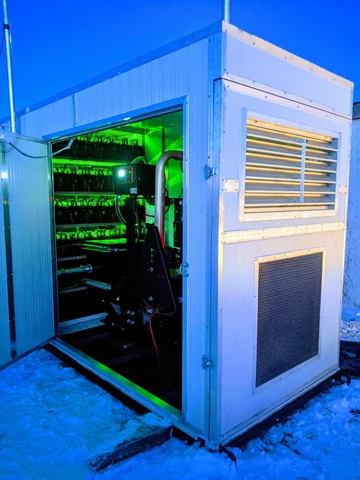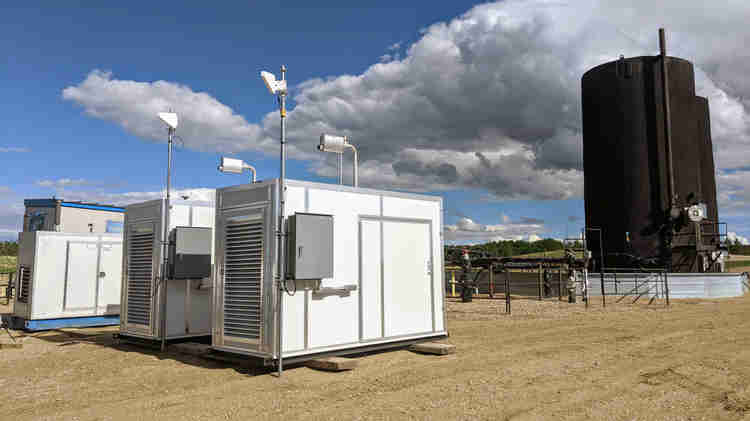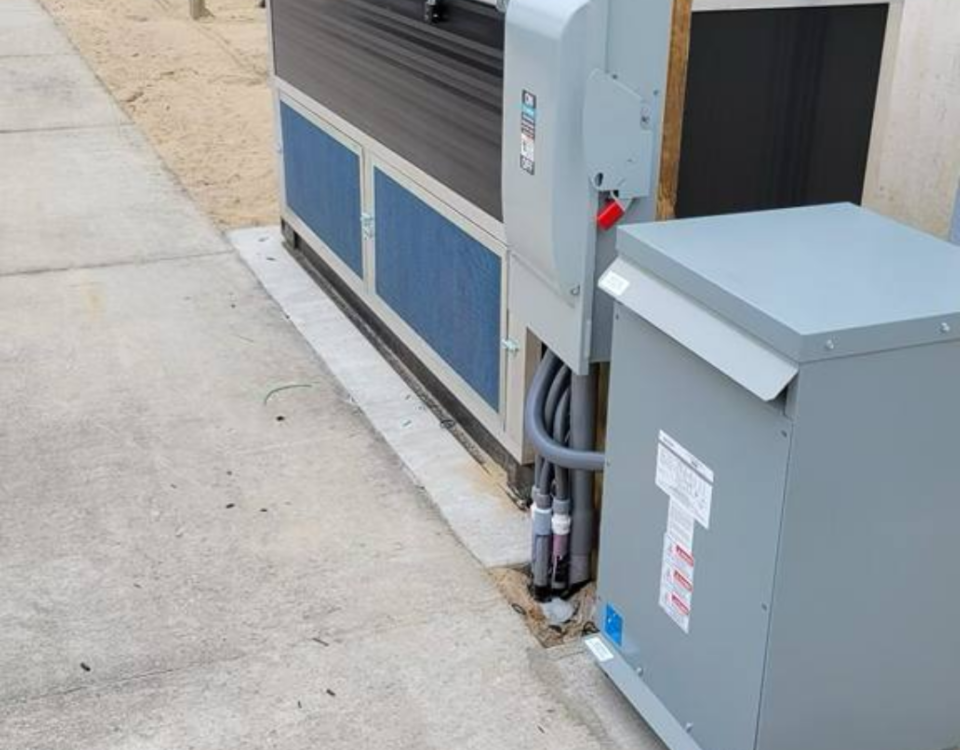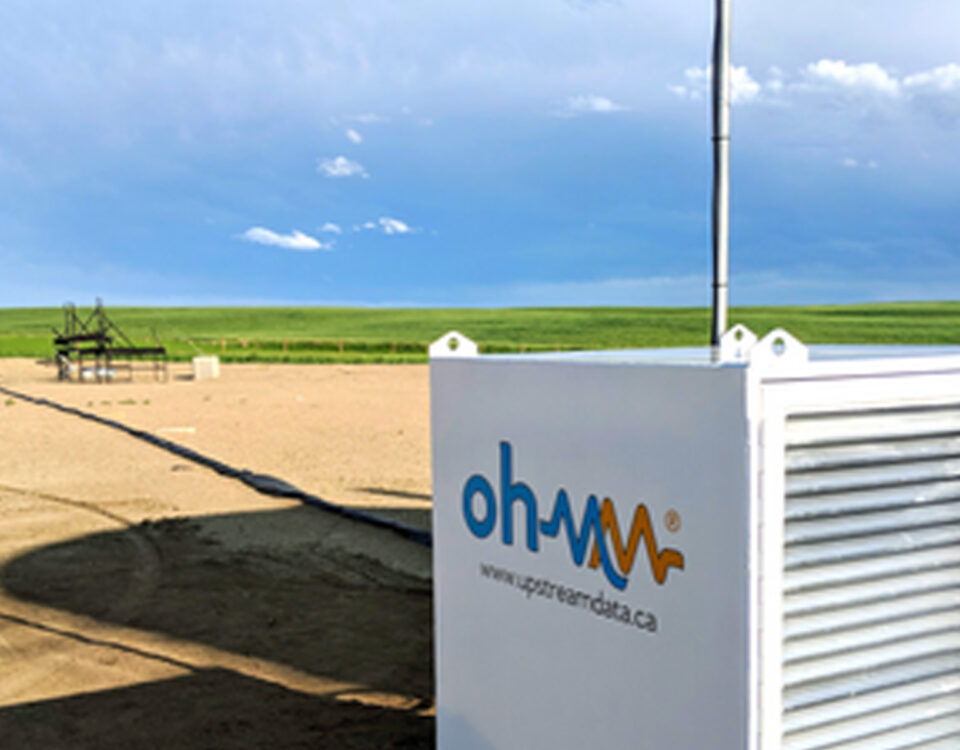Case Study:
Hash Generators prevent mineral lease expiry
One of the beautiful properties about bitcoin is that mining acts as a portable sales point for electricity no matter where it is located. While interest continues to grow in the more commonly discussed oilfield bitcoin mining applications such as conserving vent and flare gas and revitalizing economically stranded gas wells, one use case that is not receiving as much attention is deploying our portable Ohmm™ mining datacenters to prevent mineral lease agreements from costly expiration.
What are mineral rights?
In order to drill and produce an oil or gas well a prospective producer must first get permission from the mineral rights owner. The owner of oil and gas minerals is not necessarily the land owner under which the minerals reside, they will often be the government, first nations or even private or public companies. The rules around mineral rights generally vary between jurisdictions and the associated history within.
For example, in Texas mineral rights are generally owned by the surface landowner whereas in Alberta mineral rights are mostly owned by the Crown (the government).
Despite jurisdictional differences, a producer may usually obtain a mineral lease to produce the oil and gas from the mineral rights owner provided a mineral lease agreement is signed. A mineral lease agreement details important aspects of the transaction such as the amount and schedule for royalty payment to the mineral lease owner, contract duration and other terms. While each mineral lease agreement is different, generally the producer is expected to be productive and keep the property producing as much as possible. This is a common expectation no matter the jurisdiction.
When production ceases there are usually terms within the lease that render the contract terminated and the mineral lease agreement expires. Mineral lease expiration is usually caused by economic reasons rendering the property unsuitable for continued production, whether it be due to low prices, production changes (e.g. the produced water volumes increase) or producer insolvency. Usually once the mineral lease expires the producer no longer has the right to continue producing and the owner is free again to sell a new mineral lease to another producer who can be more productive. In Alberta when the mineral rights are owned by the Crown (approximately 80% of all minerals in the province) an expired property usually goes up for public auction to the highest bidder.
Producer near Wainwright, Alberta faced with costly expiry.
When the coronavirus fears choke slammed the global economy in early 2020, oil and gas producers all over the world were faced with plunging commodity prices rendering many oil properties unprofitable to produce. In response, many oil and gas facilities were shut in temporarily as producers scrambled to optimize operations and slow the bleeding as they awaited better prices. The properties that were shut in and rendered non-productive still had mineral lease agreements to uphold and many producers were faced with a costly decision to make – restart production at a loss or let the mineral lease expire.
Near Wainwright, Alberta one such producer (whose identity I will omit for privacy reasons) was facing such a predicament. This producer had a single well battery shut in due to low oil prices and the associated mineral lease agreement had a 90 day production inactivity deadline after which the mineral rights agreement would be terminated. This would have resulted in forfeiture of existing mineral rights which would have been detrimental to the business.
This particular oil well produced significant volumes of associated gas which the producer could not vent because it was in significant excess of the allowable vent volumes and flaring was not an option as permitting and approvals would take months. Their regular egress point for the gas (a gas gathering compressor station downstream) was temporarily shut in due to low commodity pricing, so without a sales point for the gas they were faced with a costly decision to either let the mineral lease expire and lose the right to produce the property or to restart the downstream facilities at significant expense.
Unleash the Hash Generators
In the coming weeks I’ll be doing a more detailed product write up on what I will boastfully suggest to be the most bad-ass bitcoin mining product ever built – the Ohmm ‘Hash Generator’.

Welcome to the future.
The Hash Generator [*] is an iteration of the ‘Combo’ products we’ve been building since day one – a combination skid housing a natural gas genset and bitcoin mine all-in-one. Some neat improvements of this newer concept is its compact / power-dense design and how we integrated the engine’s standard radiator exhaust fan to also act as the prime mover to eject heat generated by the bitcoin mining computers (called ASICs, which is shorthand for ‘Application Specific Integrated Circuits’). This design concept enabled us to minimize the cost and space requirements of secondary exhaust fans while still keeping the ASICs protected from the elements within the enclosure of the skid. Like our Combo products that came before it, the Hash Generator only needs fuel gas and an internet connection to start generating bitcoin revenue and as such it represents a convenient portable sales point for any source of economically stranded natural gas.
After hearing good things about Upstream Data this producer reached out to our Calgary sales staff in late May and after a few short weeks we came to an agreement in which the producer would take possession of two of our newly built Hash Generator units and fuel them with gas produced from this mineral lease. Not only would the producer get to use our equipment to prevent a costly mineral expiry but they would also get valuable hands on experience with operating a bitcoin mine, which would be useful information for future project evaluations.

Trail success and future plans
In June the two Hash Generators were deployed in all their glory, production was booked for the month and the mineral lease was maintained by the producer. We had worked out a mutual agreement in which Upstream would provide the equipment at no capital cost and the producer would cover the tie-in and major operating costs. (We are always willing to find a deal that works for the producer!)
The producer’s manager for production engineering had this to say about the deployment:
The compressor was evaluated for start-up but it would have generated negative cash flow for the asset, therefore we looked into alternative means of local gas consumption to avoid restarting a compressor station. The low risk, low cost option provided by Upstream Data offered up a minimal cost alternative to restart the oil well and combust gas locally while also opening up an opportunity to evaluate proof of concept in the event it truly can monetize stranded gas.
With oil prices starting to recover recently, local producers have been slowly restarting shut-in properties and gearing back up for production. After just about two months of operating our Hash Generators on this Alberta property the producer was able to successfully prevent a mineral lease expiry while also learning more about bitcoin mining as a viable use case for their properties. They will soon be restarting the downstream gas processing facilities and will no longer need the Hash Generators to keep their mineral lease productive.
We are currently working together on plans to redeploy this equipment to new sites in which they can use it to solve similar mineral expiry problems or perhaps for environmental use cases such as vent / flare gas conservation.
Final thoughts
In my experience most oil and gas producers have all kinds of applications for a portable sales point for their gas and I am excited to see where these Hash Generator units end up with this producer’s other facilities. Since mineral expiry problems tend to be a persistent issue in the industry, I have no doubt that more producers will catch on from this experience and start to consider this option for their own mineral lease expiry problems.
This particular producer was a pleasure to work with on this project, which moved very quickly and seamlessly compared to past projects that we’ve worked on in this nascent industry. It is very encouraging to observe a trend in which more and more oil and gas producers are taking bitcoin mining seriously as a viable solution to stranded energy problems.
In this new world where ESG and environmental considerations are big driving factors behind how producers plan and finance their drilling and completions programs, we expect to see more and more producers take a closer look at this technology. Indeed, my purpose in publishing our Field Reports is to help educate producers to the concept that bitcoin mining is a viable investment strategy for their properties and I think this use case for maintaining mineral rights is a shining example!
♥ Steve
If you are an oil and gas producer and enjoyed this Field Report please share with your peers, join our mailing list and follow us on Twitter – @upstreamdatainc and LinkedIn
[*] Patents pending


